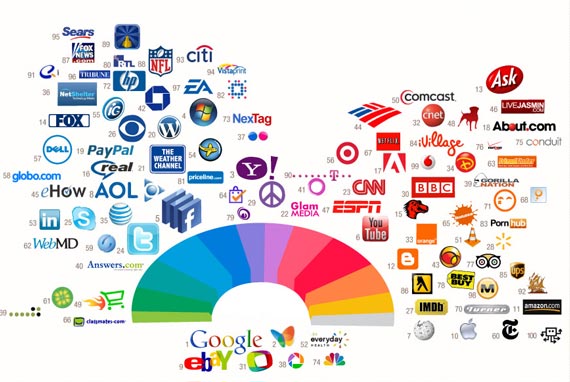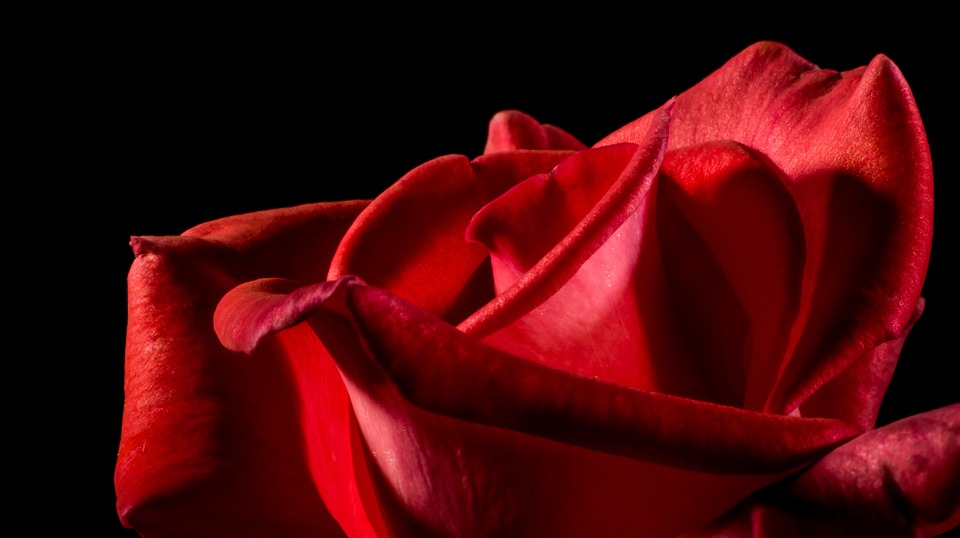Module 3-3: Color Analysis
RED
Red is a warm, primary color that comes in varying shades and tones. Red comes in two kinds of red; yellow-based reds or tomato reds and blue-based reds or berry reds. The color red has a long and varied history.
Symbolism & Meaning
Color symbolism and the meanings of color varies from culture to culture. The color red has a a variety of symbolisms and meanings. Just play a word association game with the color and many different words spring to mind. Red generally conjures strong emotions and works well in certain design choices. Red is associated with fire, blood, love, energy, life, passion, danger, strength, excitement, aggression, dominance, sin, power, anger, rage, sex, and failure.
In all of the meanings red conjures, it can vary from culture to culture and is used in variety of ways. In the U.S. we associate red with danger, sin (i.e. the devil), Christmas, Valentine's Day for love. In South Africa, it's color of mourning. The Japanese consider red to represent life, energy, and the sun hence their solid red circle on their flag. Incidentally enough, red is the most popular color for a flag. In China, red is associated with prosperity and happiness and similarly like in India, women will traditionally wear red for wedding dresses. But in all this symbolism and meaning, there is a psychological component underlying all of it.
Color Theory & Psychology
The human reaction to color, specifically red, is an interesting hybrid of reactions. Our reaction is probably 50/50 biological and cultural/social conditioning. Imagine this. Someone with a red, flushed face approaches you. What's your immediate reaction? You thought that person was angry, embarrassed, or attractive, right? You didn't think they were just happy or sick. Now imagine the same person approaching you with a pale face. What is your immediate reaction here? You ask that person if they are OK. You thought they were scared or sick, right?
Color plays an important role affecting how we interact with people, situations, products, websites, etc. In nature, red is a signal of fertility in females and aggression and dominance for males. However, in humans the color red influences us across many different situations. Humans find red to be very attractive. We even find a red, flushed face to be more attractive.
Website & Document Design
When you have such a variety of meanings attached to a color, you have to carefully consider your color choice in areas like marketing, document design, and website design. The wrong color might communicate the wrong message. Again, we harken back to color psychology and association. Marketing teams for companies have to consider color usage and how the item or advertisement will be perceived before using one color or combination or the other. Two other concerns are color strength and color blindness. Red can be overpowering if overused, but it can also be dynamic and powerful depending on the shade. The other concern to consider in using red in design and design elements is red-green color blindness. According to the National Eye Institute (NEI), red-green color blindness is one of the most common types of color blindness. One way of working around and helping out those with color blindness is making sure to prioritize usability and have multiple cues and buttons.
Visit these websites for further research into color blindness and red-green color blindness in particular.
Getting back to design considerations, there is an interesting design principle that website and document designers should pay attention to and use carefully. It's the red effect.
What is the red effect?
The red effect is the phenomenon of a person or item being considered to be more attractive when wearing red or consisting of red or as a bold accent color. Again, the human reaction to the use of colors is possibly rooted in a 50/50 split of social/cultural conditioning or biologically inherent.
Studies have shown that men perceive women as more attractive when they're wearing red. Women perceive men as more dominant and aggressive when they're wearing red. It's why businessmen call a red tie, a "power" tie. The red effect doesn't just have an effect in fashion and business; it can play a role in sports. Hill and Barton found that teams wearing red will win more often than teams wearing blue. Red also enhances our attention to detail such as with memory retrieval and proofreading. The red pen of death on your papers had a more important role than you realized. Now that you see how red influences your and other people's reactions and works in design, feel free to start brain storming with red on the mind.
Using the red effect carefully can produce a strong, powerful message.
Here are some websites that use predominantly red as their color scheme.
- Red.org
- Many Face of Leonardo DiCaprio
- Macys.com
- Noodles & Co.
- Target
- Beats by Dr. Dre
Red is the main color used but they're careful to use different shade and add other lighter colors like white, pink, purple, and yellow.
The following websites are good examples of red being used primarily in their logo and then as an accent color to enhance their website.
Here are some examples of red, how red is used in design, and what businesses people associate red with.






Works Cited
- Elliot, Andrew J., Jessica L. Tracy, Adam D. Pazda, and Alec T. Beall. "Red Enhances Women's Attractiveness to Men: First Evidence Suggesting Universality." Journal of Experimental Social Psychology 49.1 (2013): 165-68. ScienceDirect. Web. 24 Mar. 2016.
- Elliot, Andrew J., and Daniela Niesta. "Romantic Red: Red Enhances Men's Attraction to Women." Journal of Personality and Social Psychology 95.5 (2008): 1150-164. APA PsycNet. Web. 24 Mar. 2016.
- Hill, R. A., & Barton, R. A. (2005). Red enhances human performance in contests. Nature, 435(7040), 293. Web.
- PBSoffbook. "The Effect of Color | Off Book | PBS Digital Studios." YouTube. YouTube, 18 Oct. 2012. Web. 28 Mar. 2016. https://www.youtube.com/watch?v=nX0DHd5QNS8
- Morton, J. L. "Red." Color Matters. J.L. Morton, 2016. Web. 05 Apr. 2016. http://www.colormatters.com/the-meanings-of-colors/red
- University of British Columbia. "Effect Of Colors: Blue Boosts Creativity, While Red Enhances Attention To Detail." ScienceDaily. ScienceDaily, 6 February 2009. http://www.sciencedaily.com/releases/2009/02/090205142143.htm